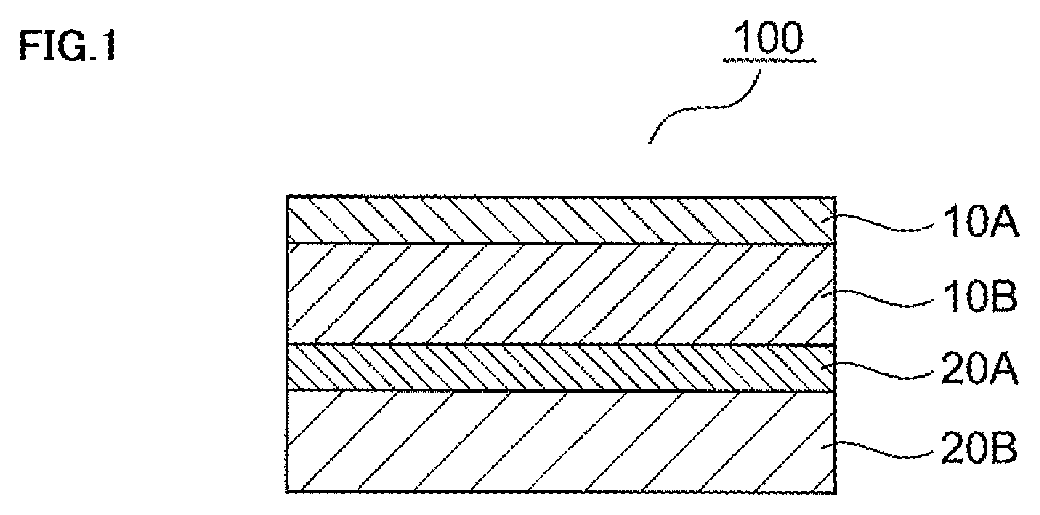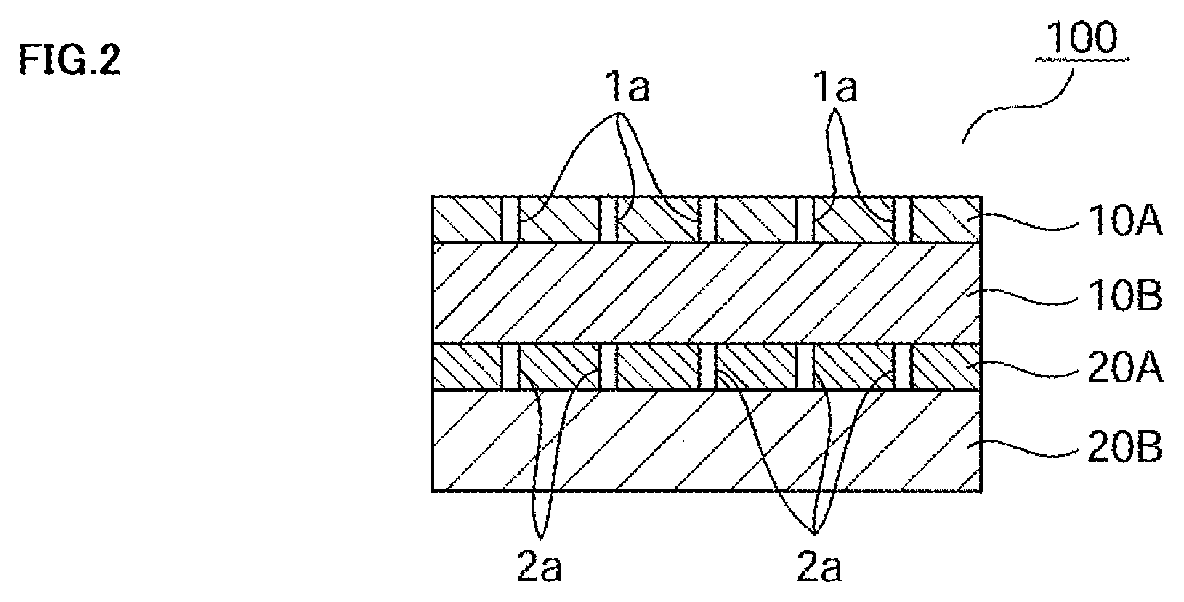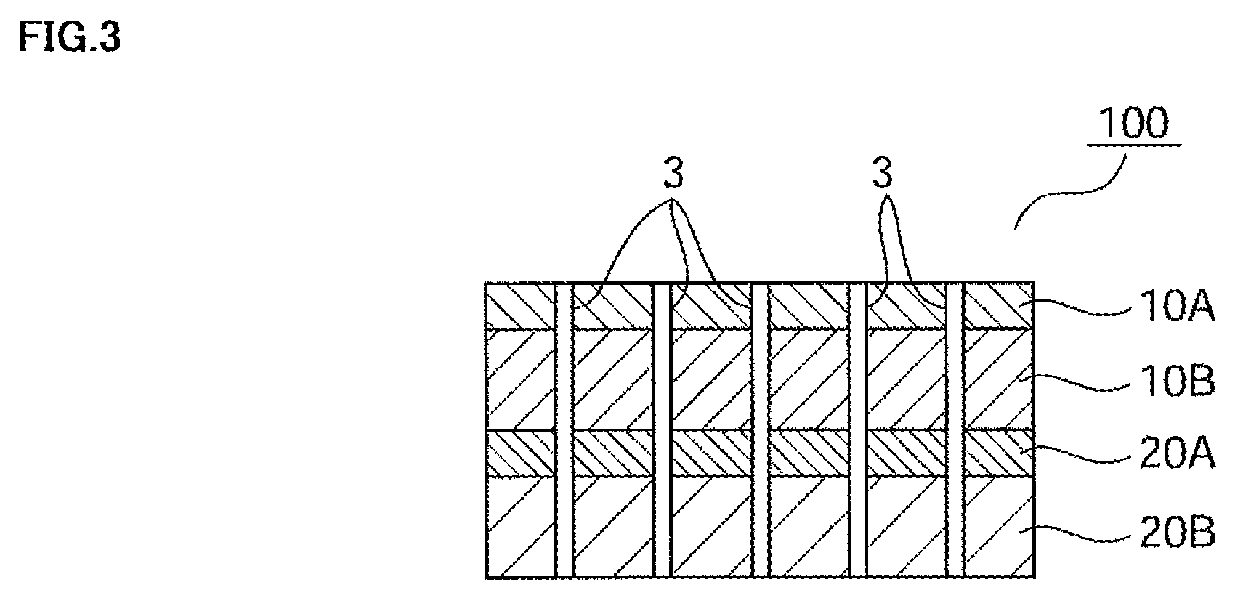Sound-absorbing material
a sound-absorbing material and material technology, applied in the field of sound-absorbing materials, can solve the problems of perforated panels, poor low-frequency sound-absorbing properties of materials, and heavy weight, and achieve the effect of excellent low-frequency sound-absorbing properties
- Summary
- Abstract
- Description
- Claims
- Application Information
AI Technical Summary
Benefits of technology
Problems solved by technology
Method used
Image
Examples
example 1
[0094]φ5 mm through-holes were formed in a polyethylene terephthalate film (thickness=4.8 μm, manufactured by Toray Industries, Inc., product name: Lumirror) at a surface opening ratio of 0.25%, and the resultant was used as a first perforated layer.
[0095]To the first perforated layer, urethane foam (thickness=10 mm, manufactured by Inoac Corporation, product name: CALMFLEX F2) was bonded. For the bonding, an acrylic double-sided adhesive tape (thickness=50 μm, manufactured by Nitto Denko Corporation, product name: GA5905) was used.
[0096]Further, to the urethane foam side of the resultant laminate, urethane foam (thickness=10 mm, manufactured by Inoac Corporation, product name: CALMFLEX F2) was further bonded. For the bonding, an acrylic double-sided adhesive tape (thickness=150 μm, manufactured by Nitto Denko Corporation, product name: No. 512) having formed therein φ5 mm through-holes at a surface opening ratio of 0.25% (second perforated layer) was used.
[0097]Thus, a sound-absorb...
example 2
[0099]A sound-absorbing material (2) having a configuration “[first perforated layer] / [acrylic double-sided adhesive tape] / [urethane foam (first porous layer)] / [second perforated layer] / [urethane foam (second porous layer)]” was obtained in the same manner as in Example 1 except that the surface opening ratio at which the through-holes were formed in each of the first perforated layer and the second perforated layer was changed to 0.5%.
[0100]The results are shown in FIG. 7.
example 3
[0101]A sound-absorbing material (3) having a configuration “[first perforated layer] / [acrylic double-sided adhesive tape] / [urethane foam (first porous layer)] / [second perforated layer] / [urethane foam (second porous layer)]” was obtained in the same manner as in Example 1 except that the surface opening ratio at which the through-holes were formed in each of the first perforated layer and the second perforated layer was changed to 0.75%.
[0102]The results are shown in FIG. 7.
PUM
| Property | Measurement | Unit |
|---|---|---|
| thickness | aaaaa | aaaaa |
| hole diameter | aaaaa | aaaaa |
| total thickness | aaaaa | aaaaa |
Abstract
Description
Claims
Application Information
 Login to View More
Login to View More - R&D
- Intellectual Property
- Life Sciences
- Materials
- Tech Scout
- Unparalleled Data Quality
- Higher Quality Content
- 60% Fewer Hallucinations
Browse by: Latest US Patents, China's latest patents, Technical Efficacy Thesaurus, Application Domain, Technology Topic, Popular Technical Reports.
© 2025 PatSnap. All rights reserved.Legal|Privacy policy|Modern Slavery Act Transparency Statement|Sitemap|About US| Contact US: help@patsnap.com



